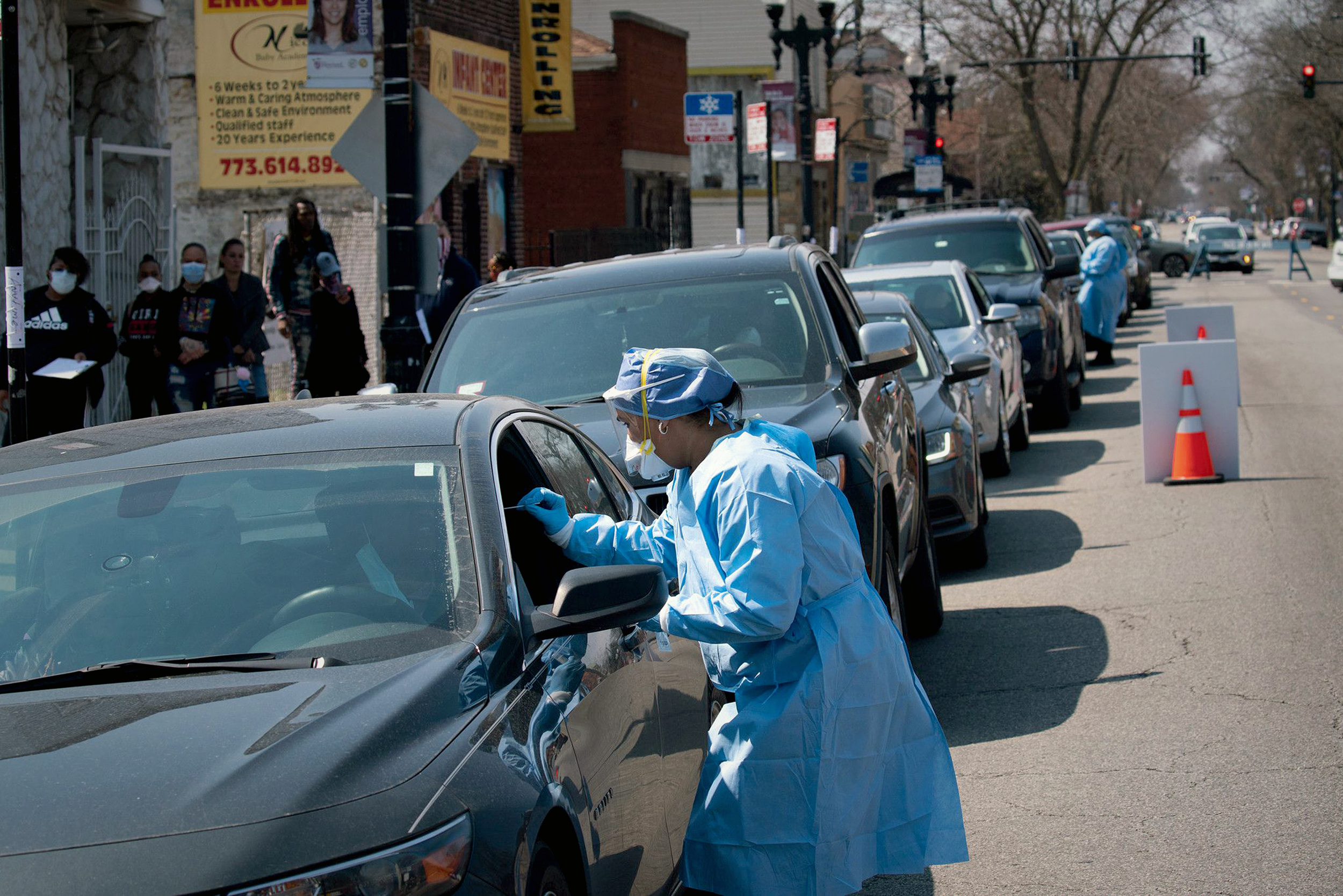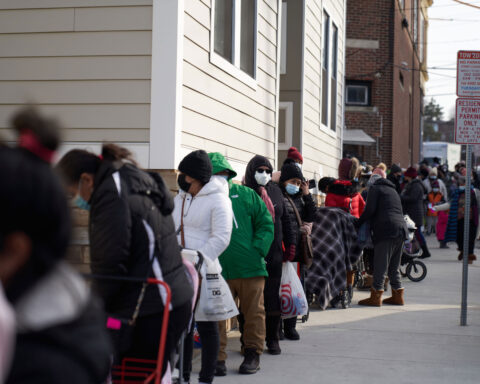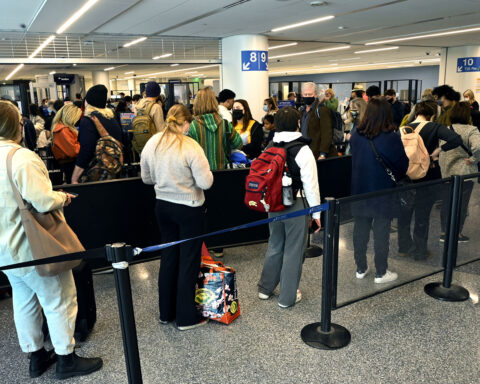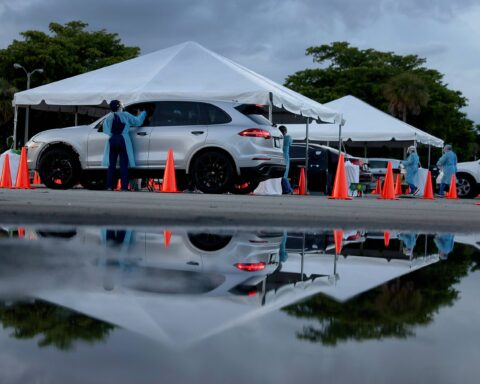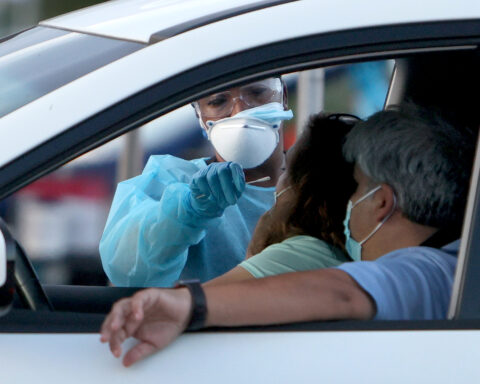The US on Monday reported more than 53,800 new Covid-19 infections: its lowest daily case countsince October and a vastly different number from those plaguing the country just last month, when infections were topping 200,000 a day.
Statistics from across the US are now reflecting more encouraging trends.
California, one of the states hit hardest by the pandemic, reported its lowest daily case increase since early November. That comes amid a steady decline not only in new infections, but in hospitalizations and deaths as well.
In New York, Gov. Andrew Cuomo reported a decline in infection and hospitalization rates, saying the state was now past a “post-holiday surge.”
“If we’re able to keep the momentum headed in a positive direction by practicing safe behaviors at an individual level, as well as continuing to vaccinate New Yorkers as quickly and fairly as possible, we’ll be able to reach the light at the end of the tunnel faster than previously thought and finally get some normalcy back into our lives,” Cuomo said in a statement Monday.
It is good to see the Covid-19 numbers heading in the right direction. But numbers are still high.
And experts worry that if Americans let their guards down — especially now with variants circulating — there could be another surge coming.
While the US Centers for Disease Control and Prevention continues to recommend Americans avoid travel if they can, the past weekend was one of the busiest for air travel in more than a month, with more than 4 million people flying since Thursday.
“The only thing that I’m concerned about now, is that we do have this UK variant … and it seems to be accelerating in the United States,” Dr. Peter Hotez, dean for the National School for Tropical Medicine at the Baylor College of Medicine, told CNN on Monday.
CDC data shows more than 1,100 cases of the highly contagious B.1.1.7 variant — first detected in the UK — have been reported in the US. The agency has previously warned the strain will see rapid growth in early 2021 and will likely become the predominant variant by March.
“New cases are going down now, below 100,000 confirmed new cases a day, that’s great news,” Hotez added. “But I’m worried we’re going to start seeing an uptick again.”
Weather adds another challenge for vaccine plans
And while officials are working to get more Americans vaccinated, winter storms are now delaying the process in parts of the country.
In Texas, Dallas County officials announced they were closing the Fair Park vaccination site through Wednesday because of severe weather.
“We understand the urgency to administer second doses of the vaccine, but we must also balance people’s safety,” officials said in a news release. “As soon as we can safely open again, we will.”
Missouri Gov. Mike Parson said mass vaccination events planned through Friday were canceled due to severe weather that “makes driving dangerous and threatens the health and safety of anyone exposed to the cold.”
In Kentucky, Gov. Andy Beshear said that while the weather “is going to slow down our vaccinations,” he hopes the state will be able to make up for the delays next week.
The storms caused disruptions as states continue to grapple with other vaccine challenges, including a short supply and distribution inequities.
Georgia Gov. Brian Kemp said on Monday that while progress on vaccine hesitancy and equity among members of the Latino community was “encouraging,” the state was still seeing a “substantial disparity in vaccine administration between Hispanic and non-Hispanic communities.”
He added the state still needed more supply from the federal government to be able to meet the growing demand.
“When we get to that point when we can expand the supply and we have that supply, we need people to be comfortable taking the vaccine,” the governor said.
Most children are in red zones under CDC school reopening guidelines
While vaccines are catching up, many parts of the country continue to see high levels of Covid-19 transmission.
In fact, about 89% of children live in a county considered a red zone under the CDC’s new school reopening guidelines, a CNN analysis of federal data shows.
Red, or “high transmission,” communities are defined by the CDC as counties where there were at least 100 new Covid-19 cases per 100,000 people or a test positivity rate of at least 10% in the past seven days.
But even in communities where there is high transmission, the agency says its new guidelines provide strategies for schools to continue in-person learning.
“At all levels of community transmission, the strategy provides options for in-person instruction,” a CDC spokesperson told CNN in an email on Monday. “It is not the case that we are saying that schools that are currently open should close because they are in counties in the ‘red.’ Our recommendation is that schools in red areas can in fact provide in-person instruction, as long as they are strictly implementing mitigation and monitoring cases in the school community.”
The agency’s guidelines, released on Friday, focus on five key Covid-19 mitigation strategies: the universal and correct wearing of masks; physical distancing; washing hands; cleaning facilities and improving ventilation; and contact tracing, isolation and quarantine. It also offers different strategies based on how much transmission there is in the surrounding community.
Some experts have also said teacher vaccinations should be essential for a return to class. CDC Director Dr. Rochelle Walensky recently told CNN that while she advocates for teachers receiving their shots, “we don’t believe it’s a prerequisite for schools to reopen.”
As of Monday, two more states — Alaska and North Dakota — have started allowing all or some teachers and school staff to begin receiving their shots, bringing the total up to 28 states plus Washington, DC.

